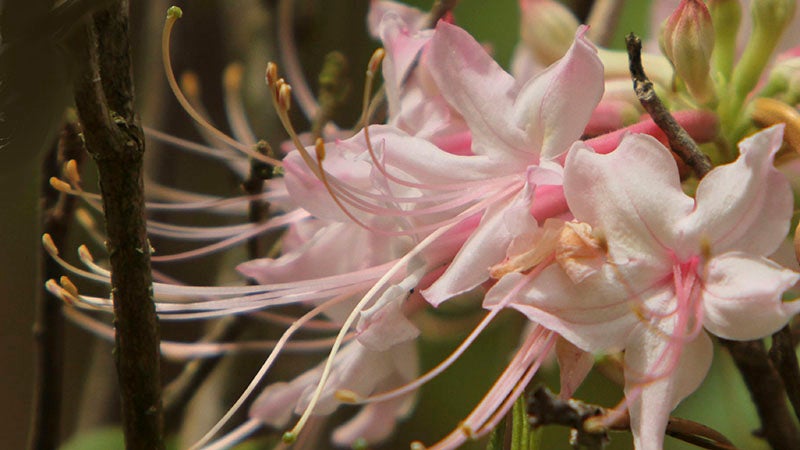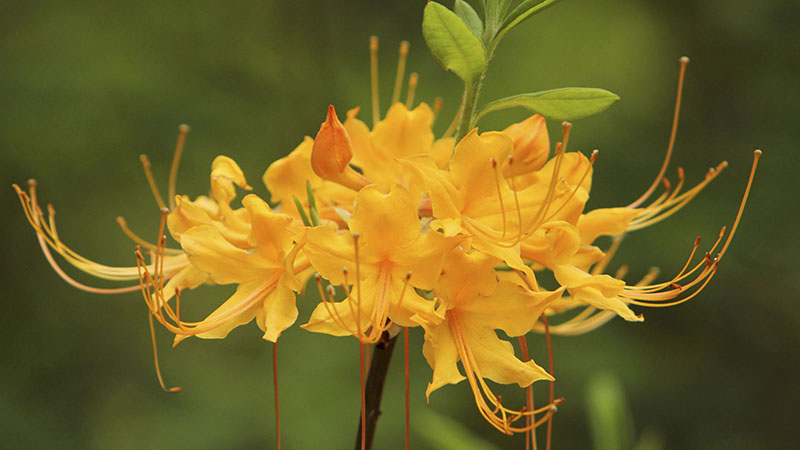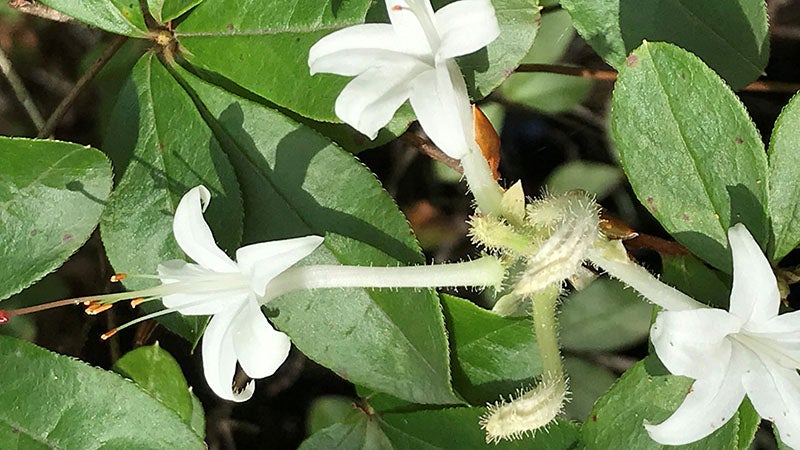Wild “honeysuckle” azaleas at the Crosby Arboretum
Published 7:00 am Wednesday, February 10, 2021
By Pat Drackett
Crosby Arboretum Director
The plump “honeysuckle” azalea buds on the shrubs growing along the Arboretum’s pathways have been stretching to the bursting point. These popular flowering plants are very easy to identify by their large buds held atop bare branches. It won’t be long now until they explode and begin to attract passing butterflies with their sweet-smelling nectar.
The pink wild azalea seen at the Arboretum is Rhododendron canescens, also called Piedmont azalea. Perhaps you’ve seen this beautiful spring-blooming shrub along coastal streams and rivers. It’s the easiest wild variety to grow in this area. The yellow and orange flowering flame azaleas (Rhododendron austrinum) will soon follow the pink azaleas, and their blooms tend to have a more spicy fragrance.
We will have an Arbor Day Plant Sale this Saturday, February 13, from 10:00 a.m. until noon, and among the selected trees and shrubs for early planting projects, we are featuring the hard-to-find native “honeysuckle” azaleas. The summer-blooming white swamp azalea (R. serrulatum), native to coastal Mississippi, will also be available.
At the Crosby Arboretum, you’ll find examples of all three of these color forms. Many hybrid crosses are found in the trade, and a popular one is ‘Admiral Semmes’ (R. ‘Hotspur Yellow’ & R. austrinum), which is the easiest to grow and most popular of the hybrid series developed by Tommy Dodd of Semmes, Alabama.
If you want to kill a honeysuckle azalea, plant it out in our Savanna Exhibit, as the full sun and wet conditions would cause its quick demise. We often use this as an example of how to locate this plant. Wild azaleas prefer moist but well-drained soil, in partial shade, such as is found on stream banks. Stroll the Arboretum’s pathways and note where certain plants are thriving. This is a good way to learn where they will be happy in your own landscape.
Halfway around the Pond Journey lies an impressive white-flowering swamp azalea (Rhododendron serrulatum), planted at the end of a bridge across from the Pinecote Pavilion. Although we tend to think of native azaleas as being spring bloomers, this one delights visitors with its fragrant summer blooms.
Want to learn more? Visit www.SoutheasternFlora.com and enter the word “azalea” in the “common name” field to pull up images of common species. This site is excellent for field identification, but if you’d like more detailed plant information, enter “NPIN” (without the quotes) in an Internet search field, plus the desired common or Latin name, to access the Lady Bird Johnson Wildflower Center plant database. Use the acronym “USDA” along with the plant name to access a range map that you can zoom into to see which counties a species has been reported in. It is interesting to see how extensive (or narrow) a plant’s range can be!
The secret to planting success is incredibly simple but continues to elude many home landscapers. We know this, because during our sales we hear so many stories of past planting failures. Snap a photo of the plant profiles included with our plants to help you locate them when you get home.
How do you learn about the exact conditions that a plant prefers? Well, the first place to start is to really get to know your property. The second thing to know is what conditions the particular plants you’d like to add to your landscape prefer. By matching the plant to the right place, you will achieve success!
The third piece of advice is to learn through observation. If you would like to grow a certain plant, just keep your eyes open for where it prospers. What do you notice about the site conditions where it is growing, the slope of the land (which affects soil moisture) and the degree of sun the plant is growing in? Snap a photo with your phone and make a few notes.
Through the remainder of February, on Thursdays and Fridays you may have the opportunity to observe a prescribed fire event in the Arboretum’s Savanna exhibit. Call the office at 601-799-2311 around 9:00 a.m. to inquire whether a burn is planned for that day.
The Arbor Day plant sale on Saturday, February 13 begins at 9:00 a.m. for Arboretum members and opens to the public from 10:00 a.m. to noon. Entry is limited in the sales area. Masks and social distancing are required. If your membership has lapsed, you may renew or join online at our website at www.crosbyarboretum.msstate.edu. Visit our Facebook page for more information on programs and activities. We’re located at 370 Ridge Road in Picayune, at I-59 Exit 4, and open Wednesday through Sunday from 9:00 to 4:30. Leashed pets are always welcome on our three miles of trails.






